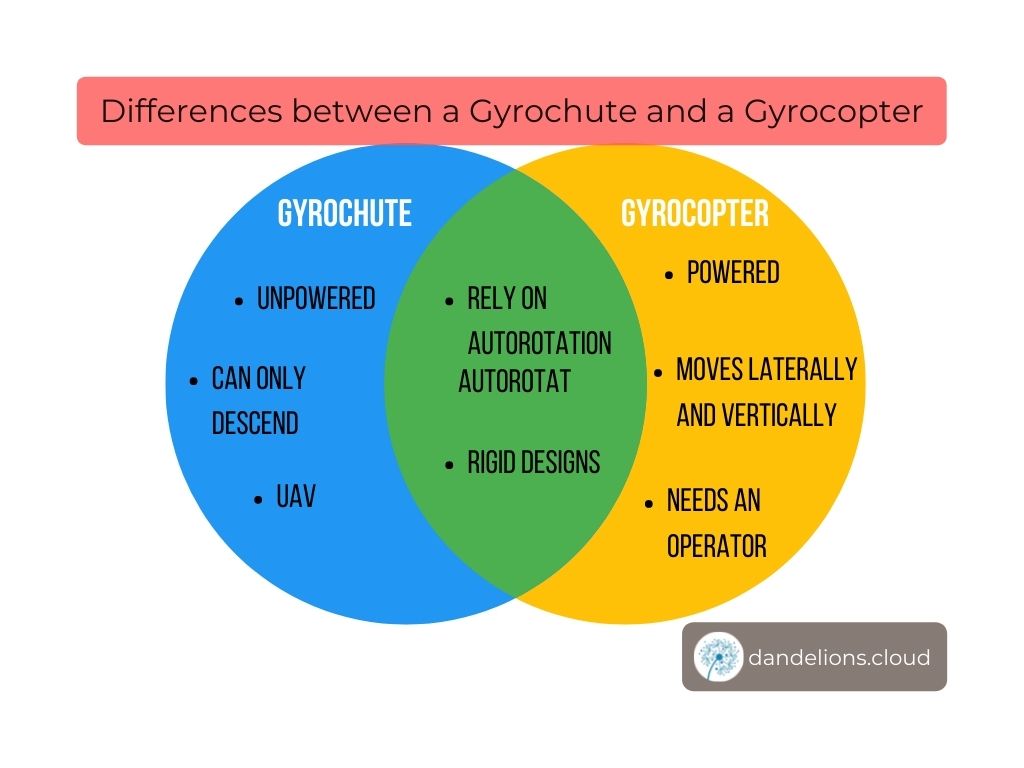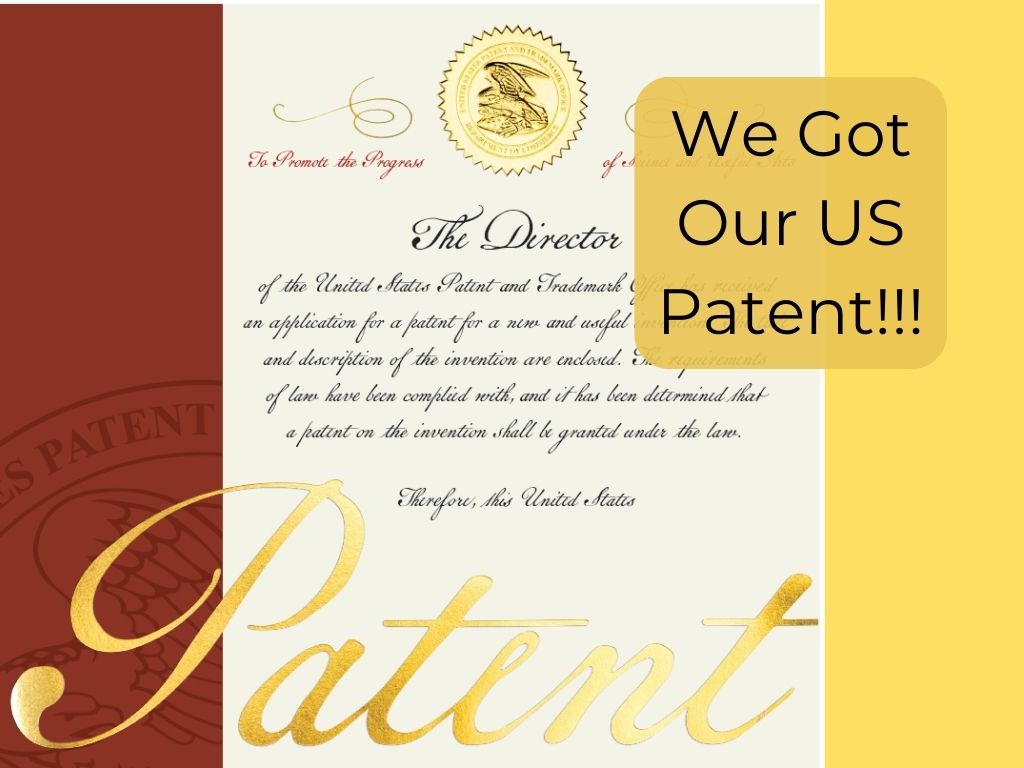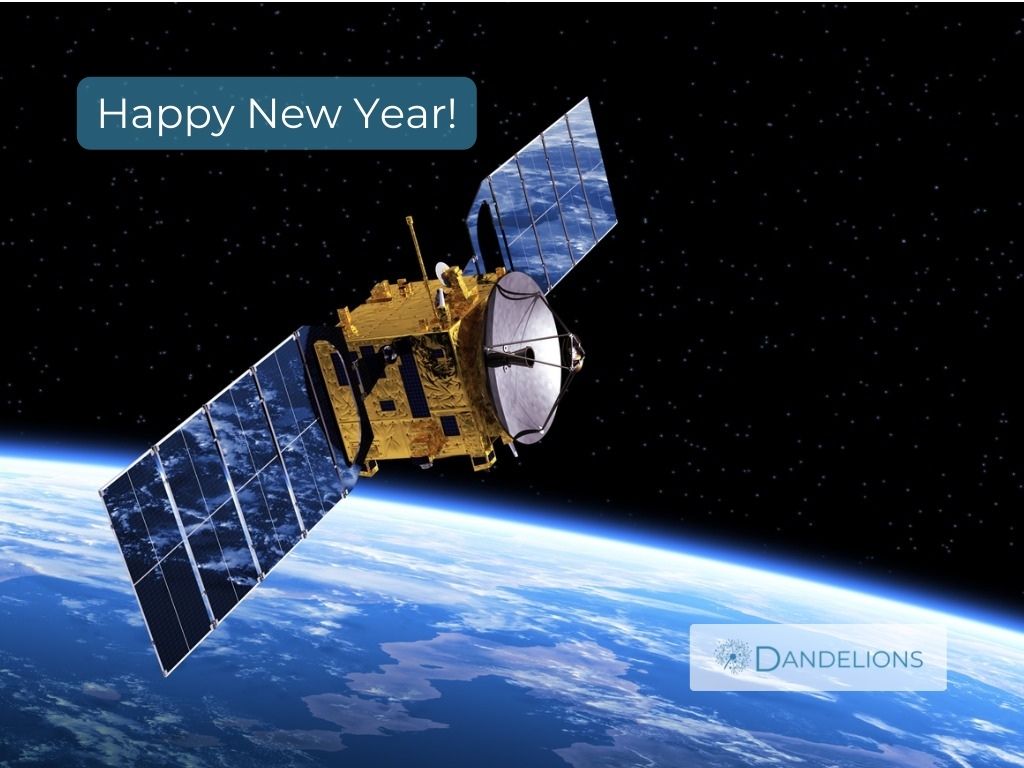What is something that looks like a helicopter, can fly like an aeroplane but can also float like a parachute?
And the answer is… Gyrocopter! Gyrocopter? What is that?
Gyrocopter is an aircraft invented by Juan de la Cierva. Basically, his invention helped so much in the creation of the modern helicopter.
So, how did he come up with it? Why did he invent it? Let’s check out the brief history of Gyrocopter!
History of Gyrocopter
A gyrocopter, or autogiro, is an aircraft in which lift is provided by a freely rotating rotor and which served as the forerunner of the helicopter. The aircraft was invented by a Spanish aeronautical engineer, Juan de la Cierva.
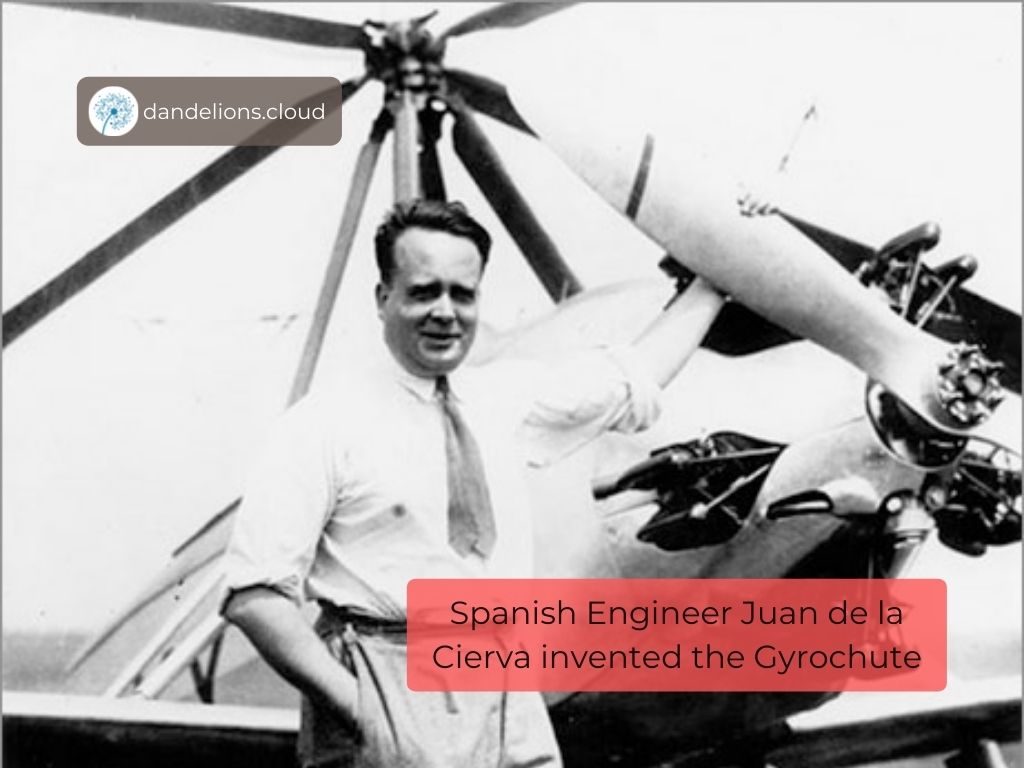
As a teenager, he was intrigued by aeronautics and studied the work of various aviation pioneers. Although his background is civil engineering, he had so much passion for aviation that from 1912 to 1919, he began designing and building various aircraft.
It was not until 1919, when his trimotor plane crashed, that Cierva was inspired to develop a more stable type of aircraft. He started considering the use of a rotor to generate lift at low airspeed, and eliminate the risk of stall. Four years later, Cierva successfully invented a more stable aircraft and had his first flight in an aircraft called the autogiro or gyrocopter.
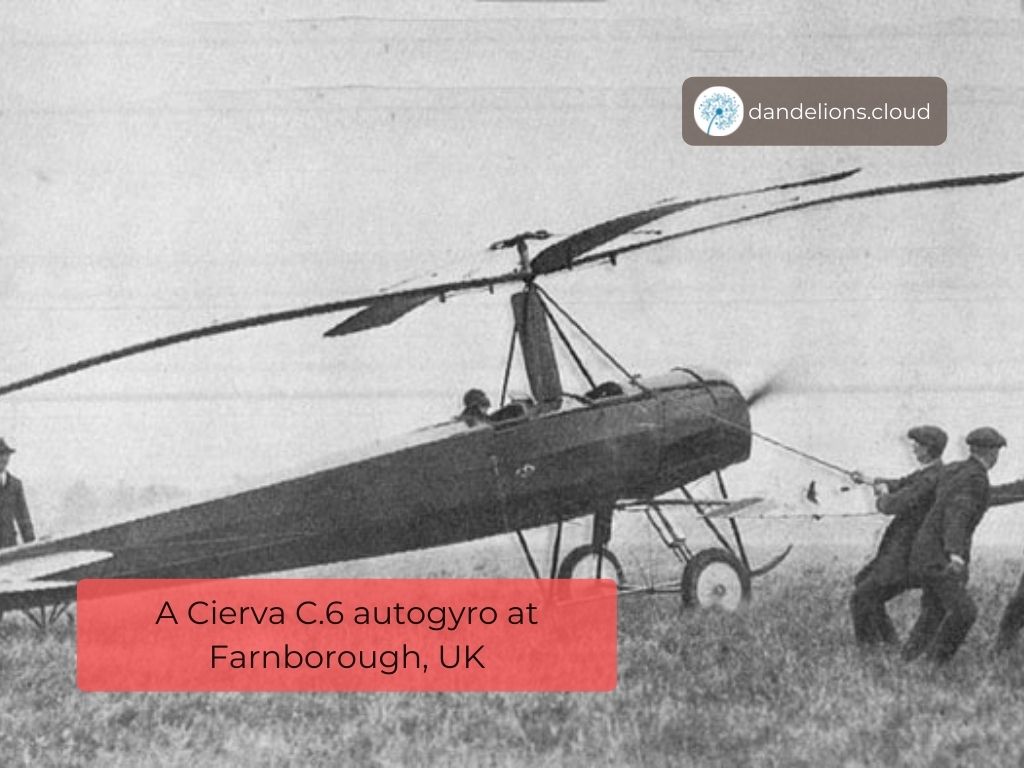
The gyrocopters were widely used in Germany, France, Japan and the US before World War 2.
Gyrochute
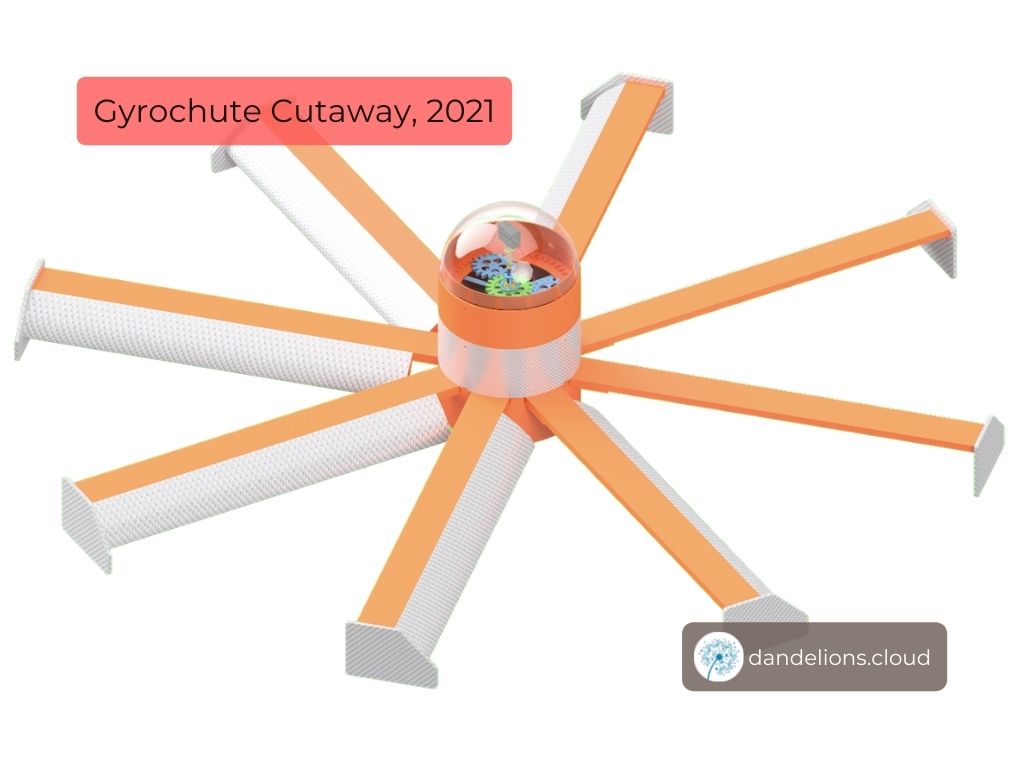
A gyrochute is an unpowered safe descent vehicle that relies on the principle of autorotation, not only air resistance. The name comes from the Greek "gyros" as the combination of the term "ring", "circle", and "spiral" and the French word "chute" for "fall".
So, what is it that makes Gyrocopter different from the gyrochute?
Similarities Between The Gyrochute and Gyrocopter
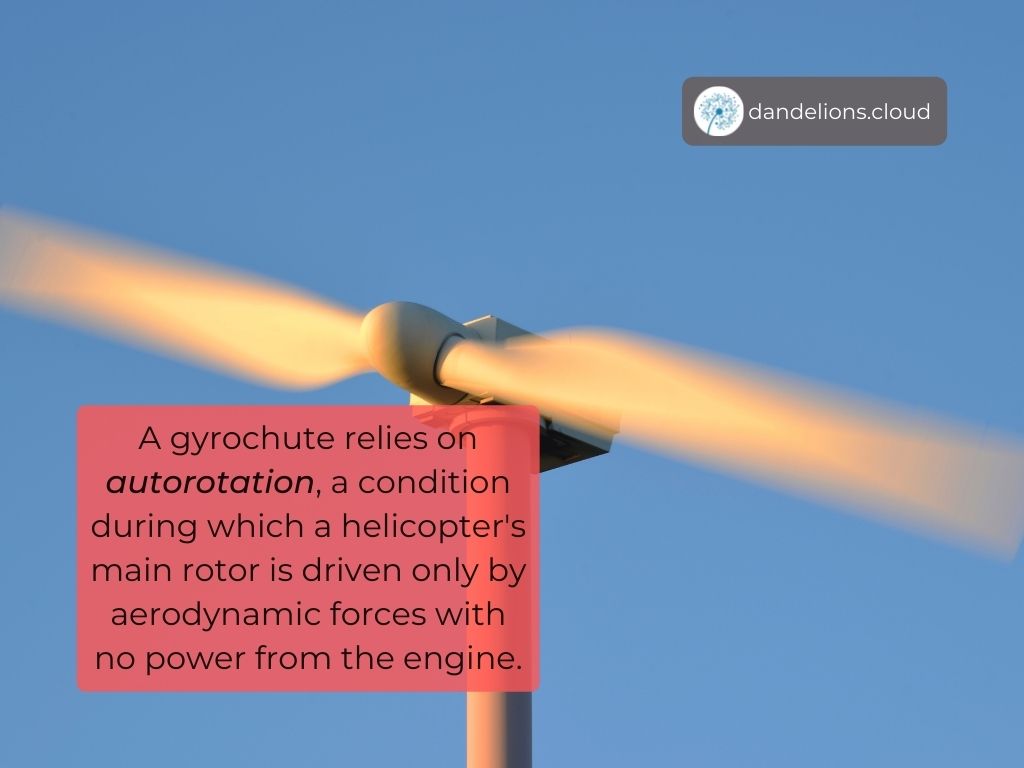
Autorotation
A gyrochute relies on autorotation, a condition during which a helicopter's main rotor is driven only by aerodynamic forces with no power from the engine. Just like the helicopters, autorotation allows the gyrochute to safely land. The kinetic energy stored in the rotating blades is used to decrease the rate of descent and make a soft landing.
Safety: The vehicle is designed for unpowered descend, which means it can safely land upon deployment.
Easily Deployed: The gyrochute does not rely on any roadways for delivery. The vehicle is ready for delivery even when a disaster is currently happening.
Small Size: Since the vehicle does not need power and does not carry passengers, it is small in size and therefore can be easily stored.
The gyrocopter also uses autorotation. Unlike the gyrochute, the gyrocopter uses autorotation to produce lift, which means that its rotor is not powered by a motor but turns by the action of the relative airflow on the blades.
Since it is driven by autorotation, the aircraft has several advantages:
Safety: If the propeller fails, the rotary wing stays in autorotation. In fact, the same procedure is used when landing the gyrocopter under normal conditions and in an emergency.
Short take-off and landing distances: The gyrocopter only needs 10 to 15 meters to take off or land. This situation enables it to take off almost vertically and also to land with high approach angles.
Low operation and maintenance costs: The gyrocopter has the following characteristics that allow it to have low operation and maintenance costs:
simplified aircraft mechanics
basic rotary-wing system
cost-efficient propeller-driven engine
easily transported and stored when the rotor is dismounted
Rigid Designs
The RC helicopter and the gyrochute both have rigid designs. This rigid structure provides better strength to control and stabilise the vehicle during descent.
Differences Between The Gyrochute and Gyrocopter
Power
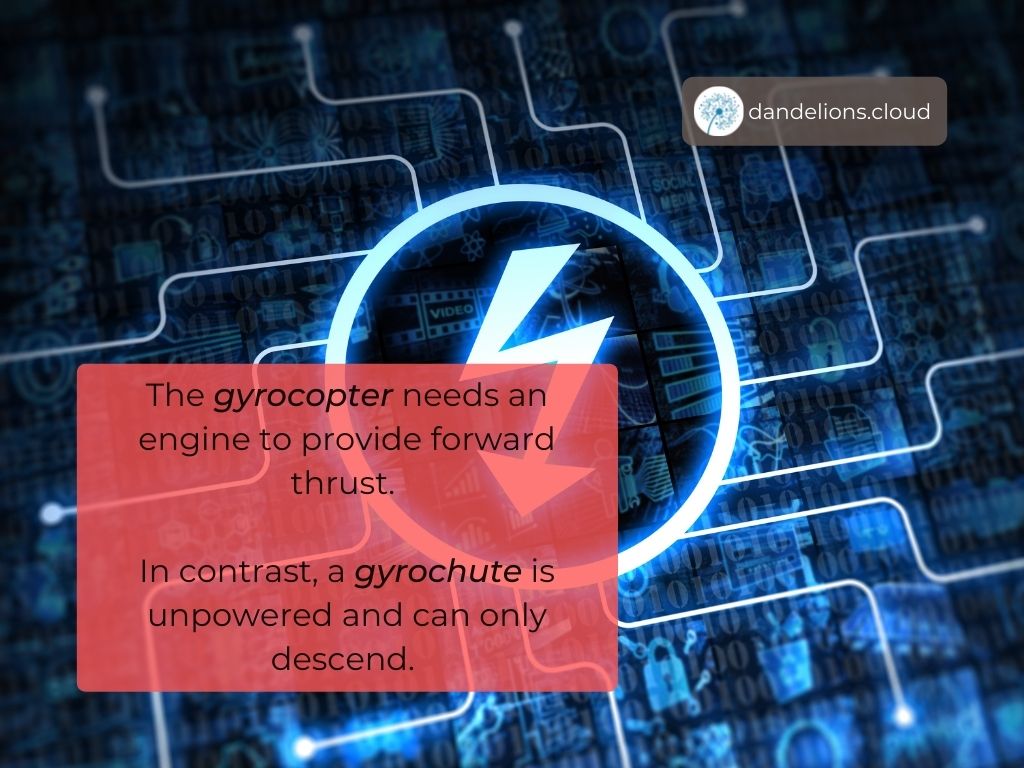
Although the rotor of a gyrocopter is not powered directly by a motor but turns by the action of the relative airflow on the blades, the gyrocopter still needs an engine to provide forward thrust. The gyrochute, on the other hand, can only descend because it has no power.
Operators
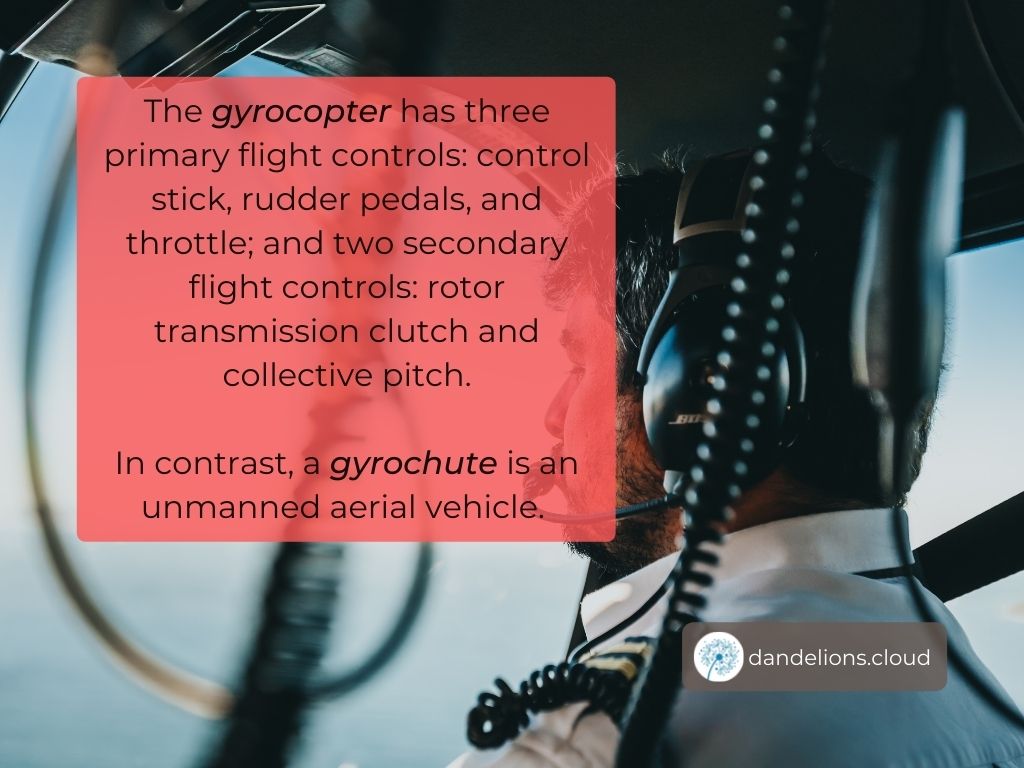
The gyrocopter needs a pilot to operate the aircraft. The gyrocopter has three primary flight controls: control stick, rudder pedals, and throttle; and two secondary flight controls: rotor transmission clutch and collective pitch.
The gyrochute, on the other hand, is an unmanned aerial vehicle. Because the gyrochute is a UAV, it can be navigated without a human pilot on board.
Conclusion
The gyrochute and the gyrocopter both rely on autorotation and have rigid designs. The gyrocopter needs power and operator to move laterally and vertically. Meanwhile, the gyrochute is a type of an unpowered UAV that can only descend.
